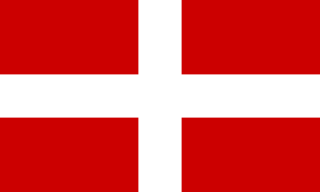
Savoy is a cultural-historical region in the Western Alps. Situated on the cultural boundary between Occitania and Piedmont, the area extends from Lake Geneva in the north to the Dauphiné in the south and west and to the Aosta Valley in the east.
Humbert III, surnamed the Blessed, was Count of Savoy from 1148 to 1189. His parents were Amadeus III of Savoy and Mahaut of Albon. He ceded rights and benefits to monasteries and played a decisive role in the organisation of Hautecombe Abbey. It is said that he would rather have been a monk than a sovereign. On the death of his third wife, he retired to Hautecombe, but then changed his mind and, by his fourth wife finally had a son, Thomas. He sided with the Guelph party of Pope Alexander III against the Ghibelline emperor Frederick Barbarossa. The result was an invasion of his states twice: in 1174 Susa was set on fire, and in 1187 Henry VI banished him from the Holy Roman Empire and wrested away most of his domains. He was left with only the valleys of Susa and Aosta. He died at Chambéry in 1189. He was the first prince buried at Hautecombe. His memorial day is 4 March.

Amadeus V was Count of Savoy from 1285 to 1323.
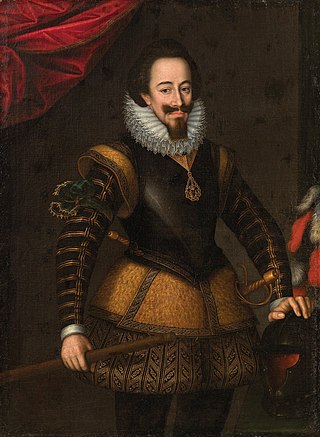
Charles Emmanuel I, known as the Great, was the Duke of Savoy and ruler of the Savoyard states from 30 August 1580 until his death almost 50 years later in 1630. He was nicknamed Testa d'feu for his rashness and military aggression.

Charles Emmanuel II ; 20 June 1634 – 12 June 1675) was Duke of Savoy and ruler of the Savoyard states from 4 October 1638 until his death in 1675 and under regency of his mother Christine of France until 1648. He was also Marquis of Saluzzo, Count of Aosta, Geneva, Moriana and Nice, as well as claimant king of Cyprus, Jerusalem and Armenia. At his death in 1675, his second wife Marie Jeanne Baptiste of Savoy-Nemours acted as regent for their nine-year-old son.

The House of Savoy is an Italian royal house that was established in 1003 in the historical Savoy region. Through gradual expansion, the family grew in power from ruling a small Alpine county north-west of Italy to absolute rule of the Kingdom of Sicily from 1713 to 1720, when they were handed the island of Sardinia, over which they would exercise direct rule from then onward.

The Duchy of Savoy was a territorial entity of the Savoyard state that existed from 1416 until 1847 and was a possession of the House of Savoy.
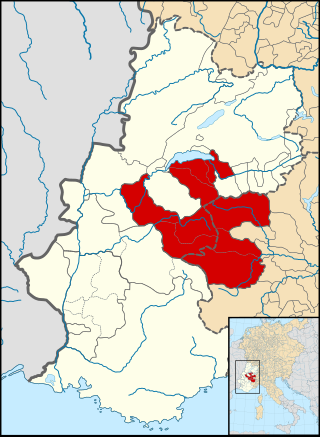
The County of Savoy was a state of the Holy Roman Empire which emerged, along with the free communes of Switzerland, from the collapse of the Burgundian Kingdom in the 11th century. It was the cradle of the future Savoyard state.

Emmanuel Philibert, known as Testa di ferro, was Duke of Savoy and ruler of the Savoyard states from 17 August 1553 until his death in 1580. He is remembered for the recovery of the Savoyard state following the Battle of St. Quentin (1557), and for moving its capital to Turin.
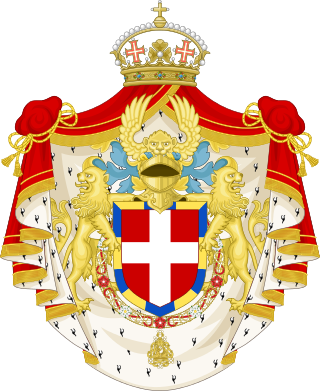
Duke of Aosta was a title in the Italian nobility. It was established in the 13th century when Frederick II, Holy Roman Emperor, made the County of Aosta a duchy. The region was part of the Savoyard state and the title was granted to various princes of the House of Savoy, second sons of the reigning king of Sardinia or king of Italy.

The nobility of Italy comprised individuals and their families of the Italian Peninsula, and the islands linked with it, recognized by the sovereigns of the Italian city-states since the Middle Ages, and by the kings of Italy after the unification of the region into a single state, the Kingdom of Italy.

The Battle of Staffarda took place on 18 August 1690 during the Nine Years' War in Piedmont, Northern Italy. The engagement was the first major battle of the Nine Years' War in Italy since Victor Amadeus II of Savoy joined the Grand Alliance against Louis XIV of France earlier that year.

The March or Marquisate of Turin was a territory of medieval Italy from the mid-10th century, when it was established as the Arduinic March. It comprised several counties in Piedmont, including the counties of Turin, Auriate, Albenga and, probably, Ventimiglia. The confines of the march thus stretched across the Po Valley from the Western Alps in the north, to the Ligurian Sea.

The Diocese of Aosta is a Latin diocese of the Catholic Church. It has existed in its modern form since 1817. It is a suffragan of the Archdiocese of Turin.
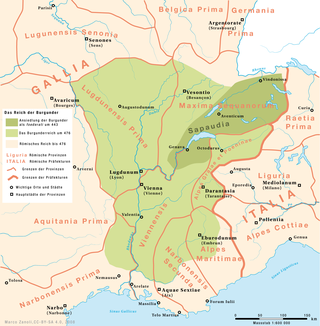
Sapaudia or Sabaudia was an Alpine territory of Late antiquity and the Dark Ages.
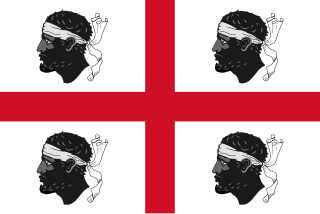
The Kingdom of Sardinia, also referred to as the Kingdom ofSardinia-Piedmont or Piedmont-Sardinia as a composite state during the Savoyard period, was a country in Southern Europe from the late 13th until the mid-19th century.

Amadeus III was the Count of Geneva from 1320 until his death. He ruled the Genevois, but not the city of Geneva proper, and it was during his time that the term "Genevois" came to be used as it is today. He was the eldest son and successor of William III and Agnes, daughter of Amadeus V of Savoy. He played a major rôle in the politics of the House of Savoy, serving consecutively as regent and president of the council, and also sitting on the feudal tribunal—one of three tribunals of the Audiences générales—of the Duchy of Aosta.
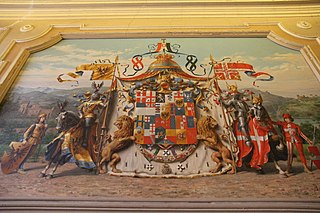
The titles of count of Savoy, and then duke of Savoy, are titles of nobility attached to the historical territory of Savoy. Since its creation, in the 11th century, the county was held by the House of Savoy. Several of these rulers ruled as King at one point in history or another.

The Savoyard state is a term of art used by historians to denote collectively all of the states ruled by the counts and dukes of Savoy from the Middle Ages to the formation of the Kingdom of Italy. This state was an example of composite monarchy. At the end of the 17th century, its population was about 1.4 million.

The Kingdom of Sardinia is a term used to denote the Savoyard state from 1720 until 1861, which united the island of Sardinia with the mainland possessions of the House of Savoy. Before 1847, only the island of Sardinia proper was part of the Kingdom of Sardinia, while the other mainland possessions were held by the Savoys in their own right, hence forming a composite monarchy and a personal union which was formally referred to as the "States of His Majesty the King of Sardinia". This situation was changed by the Perfect Fusion act of 1847, which created a unitary kingdom. Due to the fact that Piedmont was the seat of power and prominent part of the entity, the state is also referred to as Sardinia-Piedmont or Piedmont-Sardinia and sometimes erroneously as the Kingdom of Piedmont.


















